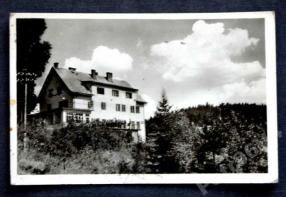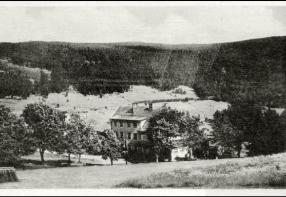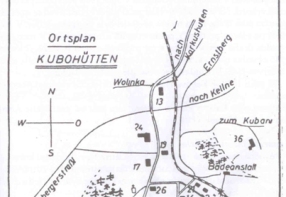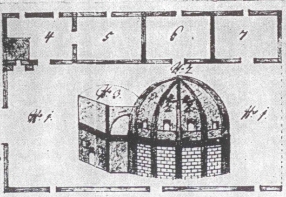HISTORY OF THE VILLAGE
Kubova Hu was originally a village of glass-workers, and its first mention in written documents dates back to 1728. It was named after a certain Mr. Guba, a county representative of the local manor, or after a forest of the same name. The Count Adam Frantisek Schwarzenberg gave 45 hectares of forest adjacent to the Guba forest to a citizen of Vimperk, named Jan Podschneider (Padescheyder), who had worked at the Janoukova glass-works for 22 years, to build a glass-works, including residences for himself and his labourers. He was also allowed to turn the land into fields, meadows and pastures following exploitation of timber. Potash extraction was to take place in the Mlynařovická and Batavská localities. Rent for land was set at 10 florins and rent for forest to 35 florins, which Podschneider was to start repaying in six years. The glass-works was opened on 12th September 1729. Window panes, mirrors and white glass were also produced here. However, Podschneider was unsuccessful and the glass-works closed due to large debts in 1736. Seven local settlers remained in Kubova Hu: Gregor Wagner, Leonhard Zach, Andreas Sellner, Franz Bossl, Paul Ilg and Urban Polster. However, cold summers and long severe winters made the efforts to turn every possible meter of land into fields and meadows difficult. Moreover, wild animals living in the surrounding woods were also a nuisance; a bear savaged several pieces of cattle belonging to the locals of Kubova Hu in 1808.
Construction of a new road from Vimperk to Passau and the Danube after 1811 improved the villages connection to surrounding areas. The Lukenská road, built between 1857 and 1859, became the main route through the Boubín forest, and the road leading eastwards from Kubova Hu was soon connected to Lukenská road. A railway connection between Vimperk and Lenora was opened in 1900, with a railway station being built in Kubova Hu soon afterwards.
At the turn of the 19th and the 20th centuries Kubova Hu had a telephone connection with the administrative seat of the county, located at Vimperk manor, and a gamekeeper's lodge and a hunting chalet of the manor were built in 1908. Works on a school building were initiated on 12th October 1912 and it was completed in only three months. The school welcomed its first thirty pupils on 5th January 1913. the school building is wooden; remarkably, this building was transported from North America.
The lives of the inhabitants of the village were affected by both World Wars; three died in the World War I and ten did not come back from the World War II.
Historical data about the population of the village, based on the census of 1869, are also of interest. In that year, the population of the village was 153, its highest-ever population. Each year the numbers of inhabitants fell and, after the World War II (1950), only 55 inhabitants were recorded in Kubova Hu. This did not change until 1991. Since 2001, more people have settled in Kubova Hu, gradually bringing the number of inhabitants back up to over 100.




